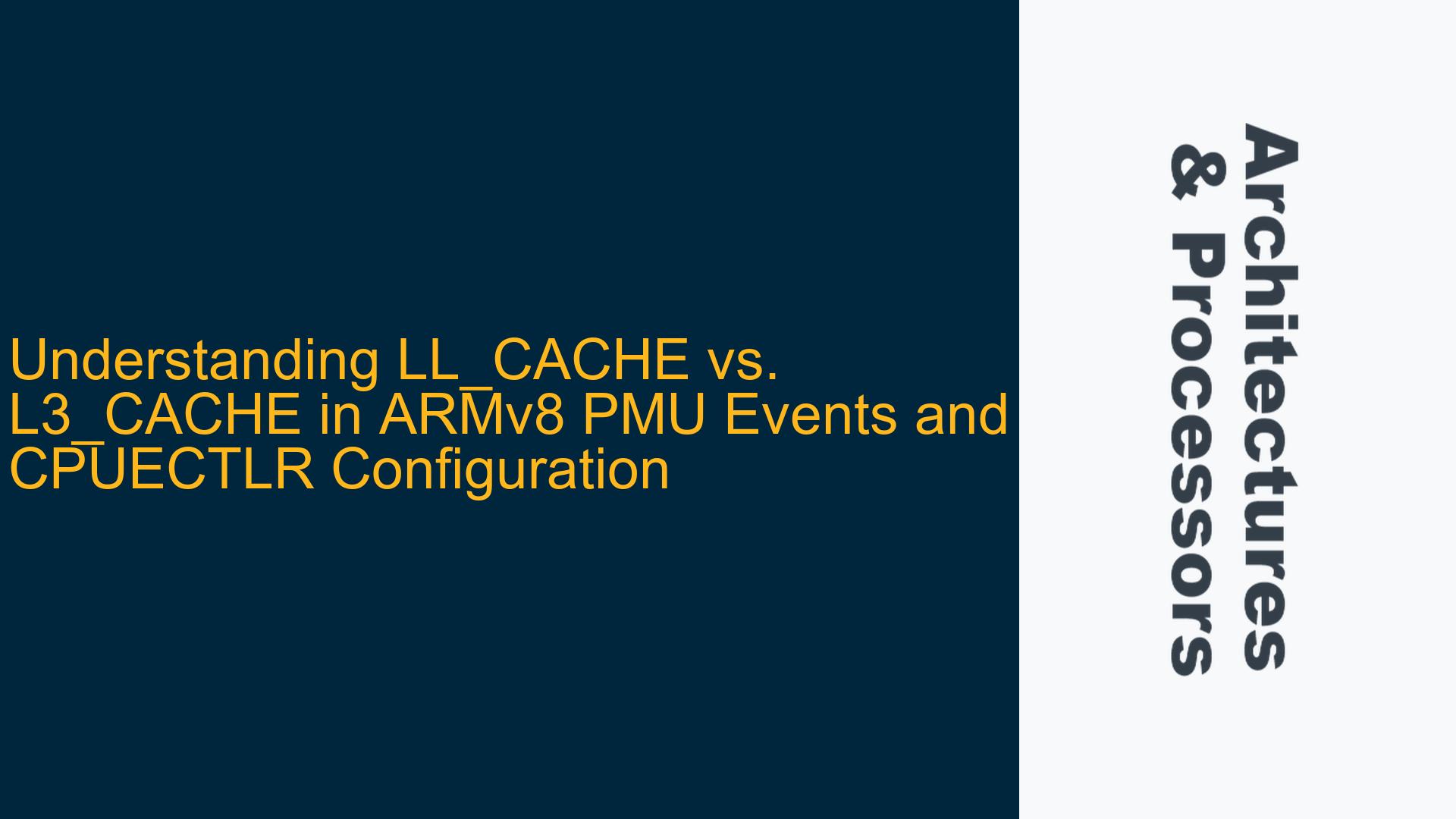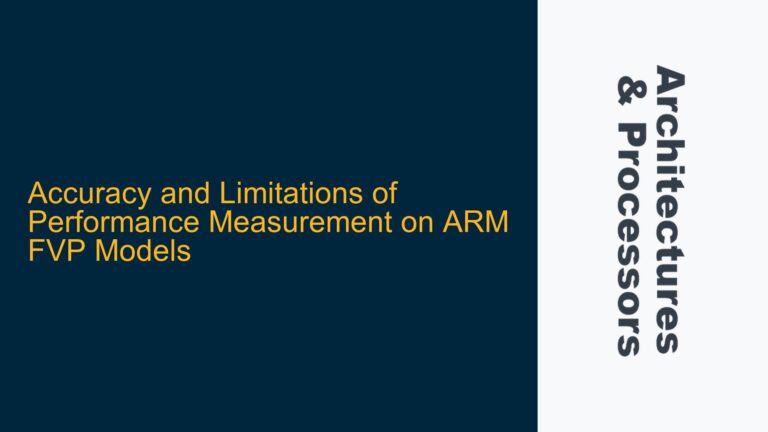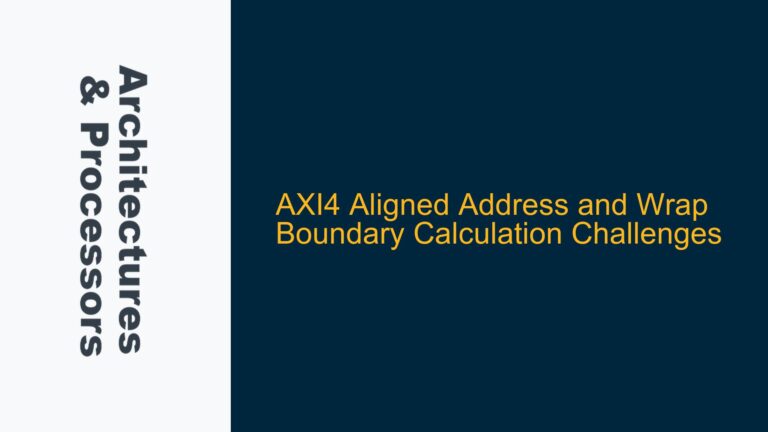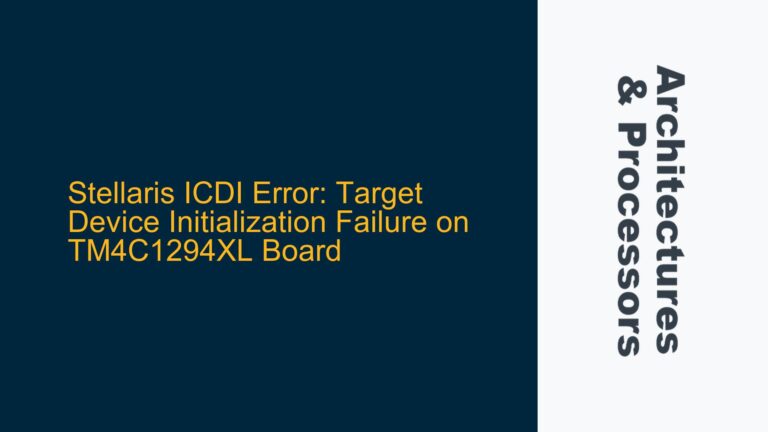ARMv8 PMU Events: LL_CACHE and L3_CACHE Definitions and Their Implications
The ARMv8 architecture introduces Performance Monitoring Unit (PMU) events to help developers analyze and optimize system performance. Among these events, LL_CACHE_MISS, LL_CACHE, L3D_CACHE_REFILL, and L3D_CACHE are critical for understanding cache behavior. However, the distinction between LL_CACHE (Last-Level Cache) and L3_CACHE (Level 3 Cache) can be confusing, especially when considering the configuration of the CPUECTLR (CPU Extended Control Register). This post delves into the definitions, differences, and implications of these terms, focusing on their relationship with CPUECTLR settings and how they influence cache performance monitoring.
LL_CACHE and L3_CACHE: Definitions and Architectural Context
In ARMv8 architectures, the cache hierarchy typically includes multiple levels of cache, such as L1, L2, and L3. The Last-Level Cache (LL_CACHE) refers to the final level of cache in the hierarchy, which is usually shared among multiple cores. In many systems, the LL_CACHE is equivalent to the L3_CACHE, but this is not always the case. The distinction arises from the system’s specific implementation and configuration.
The L3_CACHE is a physical cache level, often implemented as a large, shared cache that serves as the last point of data storage before accessing main memory. On the other hand, LL_CACHE is a logical term that refers to the last level of cache in the hierarchy, which could be L2 or L3 depending on the system design. For example, in some ARMv8 implementations, the LL_CACHE might be an L2 cache if no L3 cache is present.
The ARMv8 PMU events LL_CACHE_MISS and LL_CACHE are designed to monitor activity related to the Last-Level Cache. Similarly, L3D_CACHE_REFILL and L3D_CACHE events specifically target the L3 Data Cache. These events are crucial for identifying cache performance bottlenecks, such as high miss rates or inefficient data refills.
The CPUECTLR register plays a pivotal role in determining how these PMU events are counted. Specifically, the CPUECTLR.EXTLLC bit (Extended Last-Level Cache) influences whether the LL_CACHE events count transactions that hit the system-level cache (interconnect cache) or duplicate the behavior of the last-level cache events. When CPUECTLR.EXTLLC is set, LL_CACHE events count transactions that hit the system-level cache, which might include an external cache or a shared cache in a multi-core system. When CPUECTLR.EXTLLC is not set, LL_CACHE events behave identically to the corresponding L*D_CACHE_RD events for the last-level cache implemented in the system.
CPUECTLR Configuration and Its Impact on Cache Event Counting
The CPUECTLR register is a critical component in ARMv8 systems, providing extended control over cache behavior and performance monitoring. The EXTLLC bit in CPUECTLR determines how LL_CACHE events are interpreted and counted. Understanding this configuration is essential for accurately interpreting PMU event data and diagnosing cache-related performance issues.
When CPUECTLR.EXTLLC is set, the system treats the interconnect cache or system-level cache as part of the Last-Level Cache. This means that LL_CACHE events will include transactions that hit this external cache, providing a broader view of cache activity. This configuration is useful in systems where the interconnect cache plays a significant role in data sharing and coherence, such as in multi-core or multi-cluster designs.
Conversely, when CPUECTLR.EXTLLC is not set, LL_CACHE events are limited to the last-level cache implemented within the processor. In this case, LL_CACHE events behave like L*D_CACHE_RD events, counting only transactions that hit the last-level cache (e.g., L3_CACHE if present). This configuration is more straightforward and is typically used in systems where the interconnect cache is not a significant factor or where the focus is on the processor’s internal cache hierarchy.
The choice between these configurations depends on the system design and the specific performance monitoring goals. For example, in a system with a large, shared L3_CACHE, setting CPUECTLR.EXTLLC might provide more comprehensive insights into cache behavior. However, in a system with a simpler cache hierarchy, leaving CPUECTLR.EXTLLC unset might be more appropriate.
Diagnosing and Resolving Cache Performance Issues Using PMU Events
To effectively diagnose and resolve cache performance issues, developers must carefully configure and interpret PMU events related to LL_CACHE and L3_CACHE. The following steps outline a systematic approach to troubleshooting cache performance problems in ARMv8 systems.
First, verify the CPUECTLR configuration to determine how LL_CACHE events are being counted. Check the value of the EXTLLC bit to see whether it includes the interconnect cache or is limited to the last-level cache. This step is crucial for understanding the scope of the PMU event data and ensuring that it aligns with the system’s cache hierarchy.
Next, analyze the PMU event counters for LL_CACHE_MISS, LL_CACHE, L3D_CACHE_REFILL, and L3D_CACHE. High values for LL_CACHE_MISS or L3D_CACHE_REFILL indicate frequent cache misses, which can significantly impact performance. Similarly, low values for LL_CACHE or L3D_CACHE might suggest underutilization of the cache, potentially leading to inefficient data access patterns.
If high cache miss rates are observed, investigate the data access patterns and memory layout of the application. Poorly optimized data structures or inefficient memory access patterns can lead to excessive cache misses. Consider reorganizing data to improve spatial and temporal locality, or use prefetching techniques to reduce cache miss penalties.
For systems with CPUECTLR.EXTLLC set, pay special attention to the interconnect cache behavior. High activity in the interconnect cache might indicate contention or inefficiencies in data sharing among multiple cores or clusters. In such cases, consider optimizing data partitioning or reducing inter-core communication to alleviate contention.
Finally, validate any changes made to the system or application by re-running the PMU event counters and comparing the results. This iterative process helps ensure that the optimizations are effective and that the cache performance issues have been resolved.
By following these steps and leveraging the insights provided by ARMv8 PMU events, developers can effectively diagnose and resolve cache performance issues, ensuring optimal system performance and reliability.






